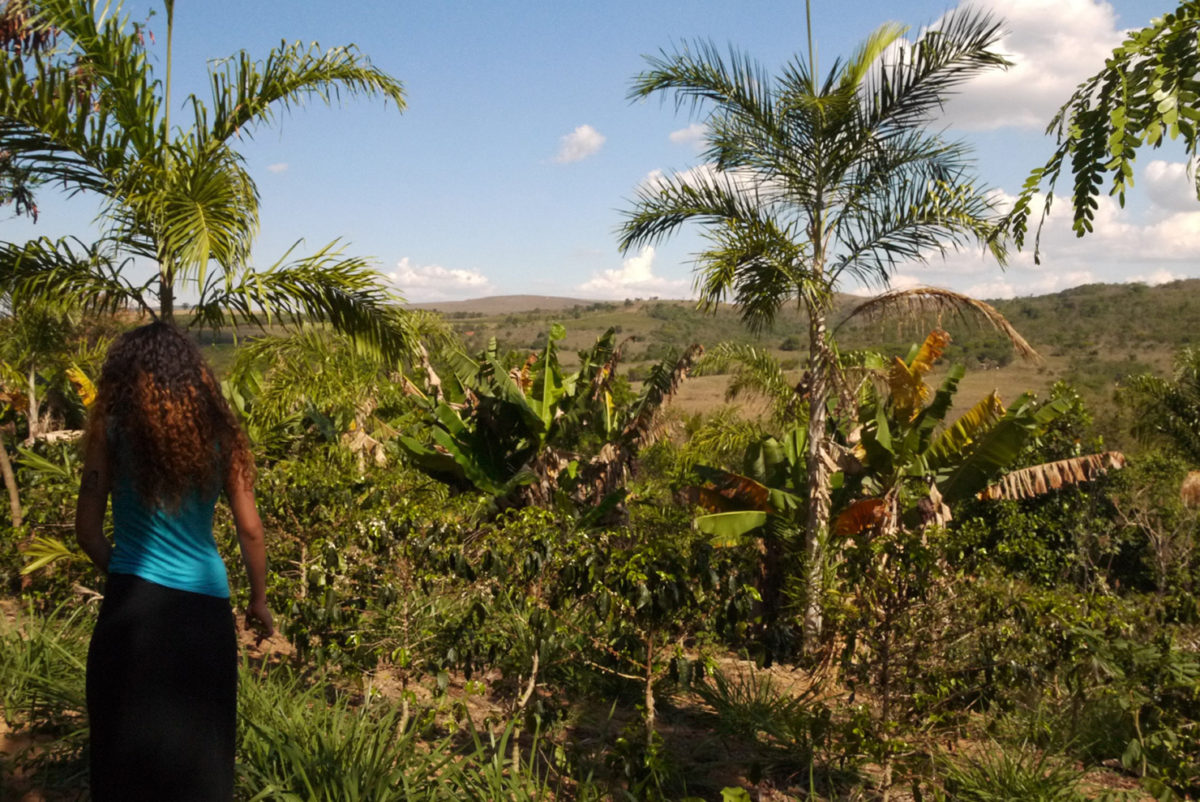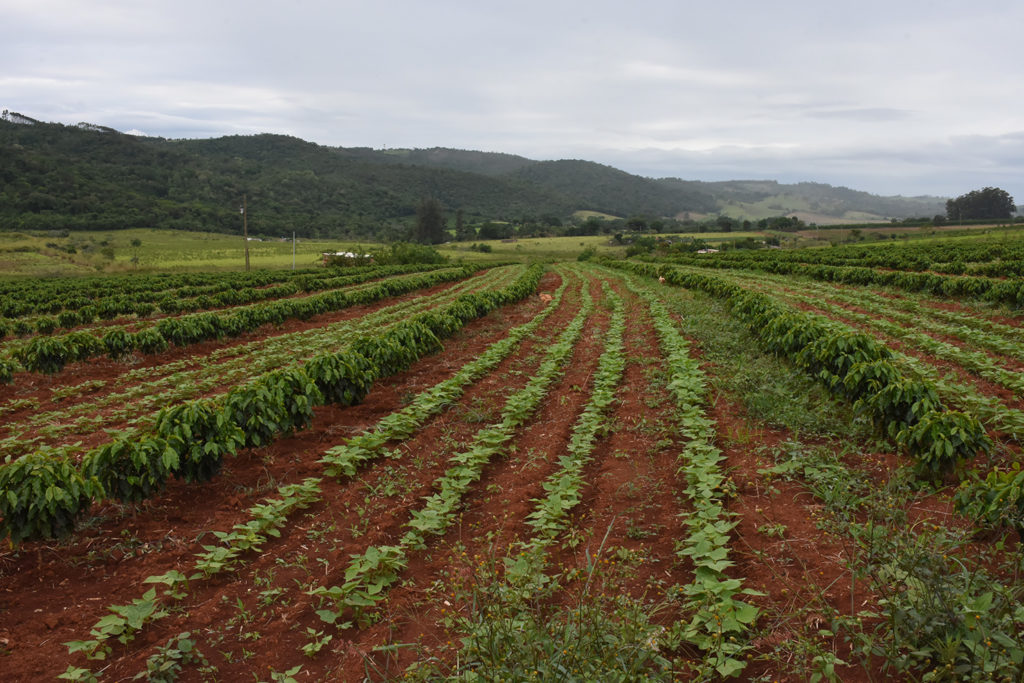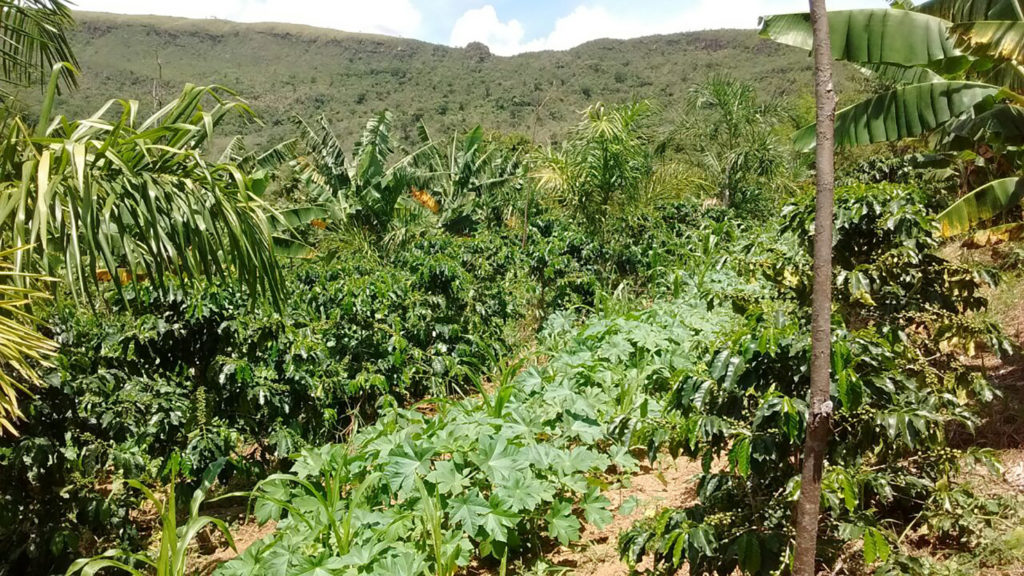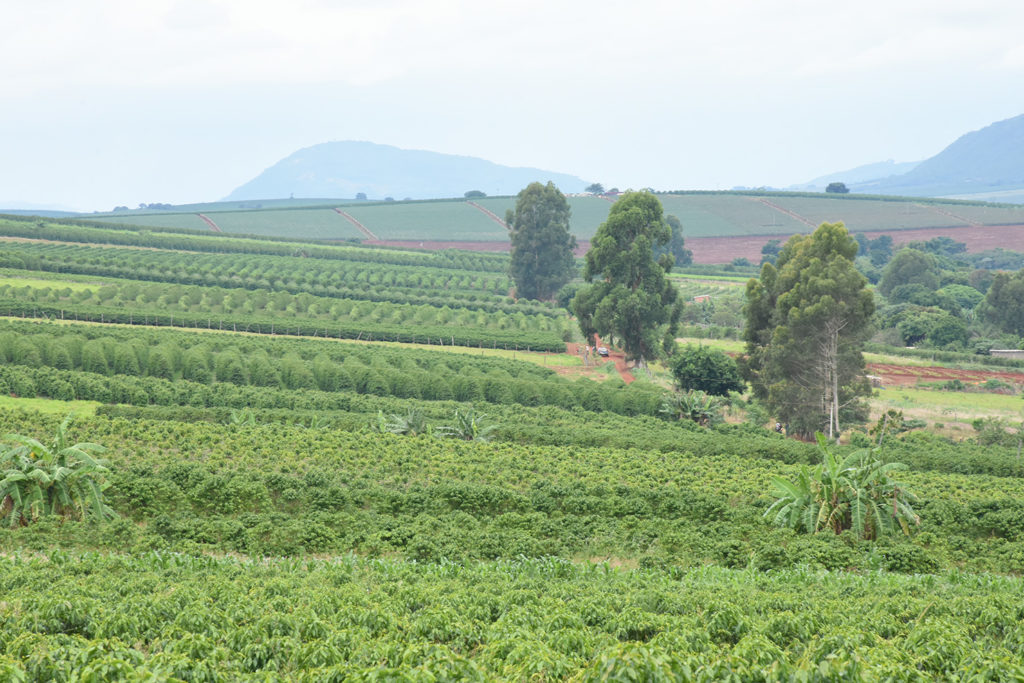In 1996, in the south of Minas Gerais state in Brazil, the Ariadnópolis sugarcane mill went bankrupt, failing to pay and fulfill its obligations with all of its employees at the time. With no money and nowhere to go, the employees occupied the mill area, where they started living and organizing themselves in an agricultural community, along with members of the Movimento dos Trabalhadores Rurais Sem Terra (MST), or Landless Agricultural Workers’ Movement, who arrived in that area in that time and the following year.
Although Brazilian agriculture ranks among the most modernized in the world, especially in the field of export crops such as soybeans, orange, sugarcane—and since we are on the subject, coffee—land concentration, or the ownership of large amounts of land by very few people, is alive and well throughout the five regions in our country. Land concentration has in fact been on the rise, according to the latest rural census released in 2018, which shows the contrast between large (over 1,000 hectares) rural properties versus small ones (smaller than 10 hectares). At the beginning of 2018, large farms accounted for merely 1% in number, that is, only 51,203 farms represented 47.6% of the total farmland in the country (up 2.6% from the last census, in 2006). On the other hand, small farms represented in number 50% (or roughly 2.5 million) of the total number of farms in the country but accounting for only 2.3% of the total farmland.
Since it was founded, in 1984, the MST has occupied plots of land throughout all five geographic regions of Brazil. The criteria, according to them, is straightforward: such land should be deemed unproductive and/or abandoned. The occupied areas are, in the majority of the cases, owned by banks or large landowners. The movement stands against monoculture and genetically modified crops, seeking social justice through agrarian reform. Throughout its existence, its members have clashed with large landowners, and mainstream media has often portrayed MST as a threat to private property, giving emphasis to violent episodes of clashes between its members and large landowners especially in the North and Midwest regions of the country.
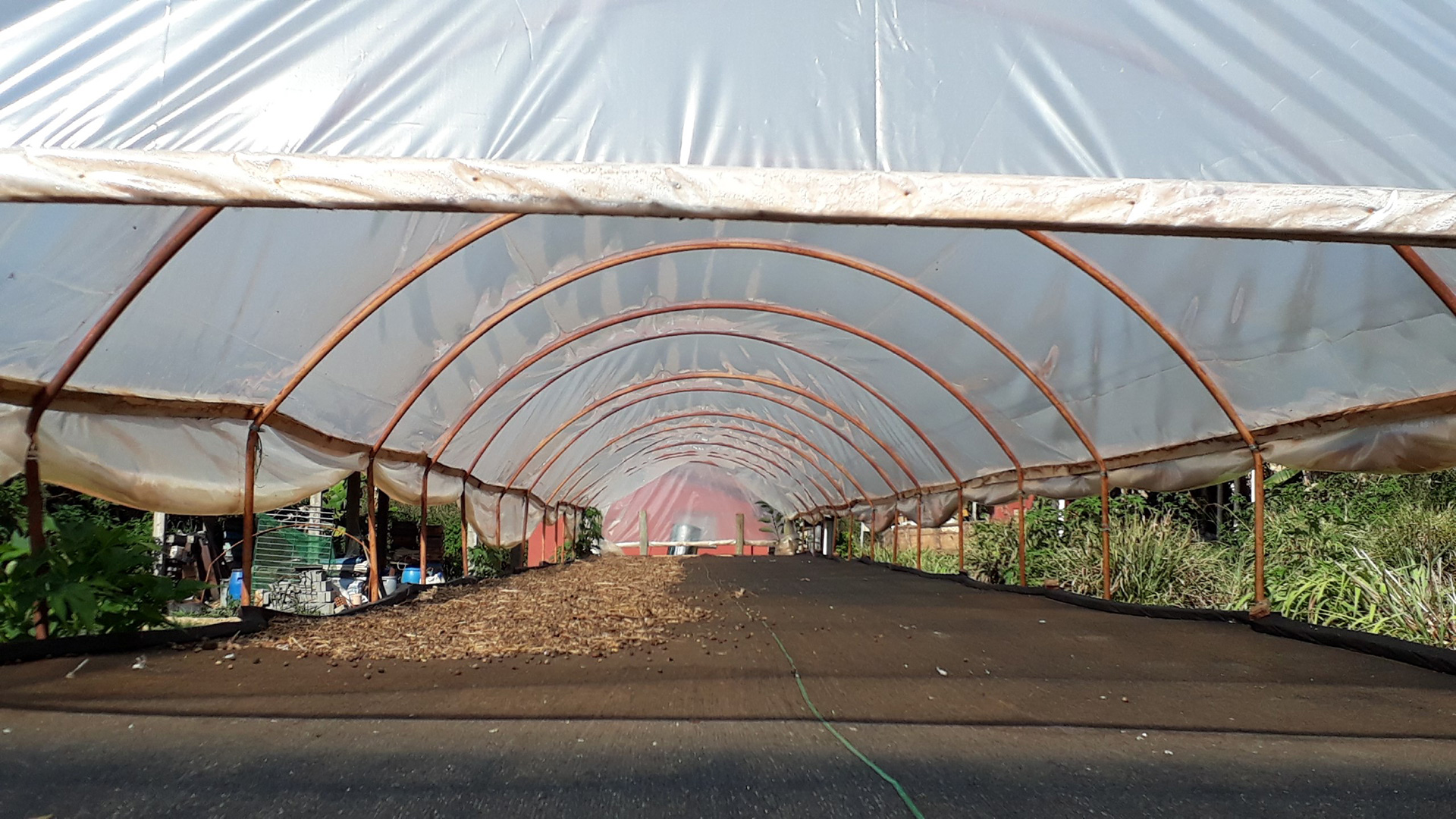
At the same time, many smaller legalized settlements have been providing food for school programs, and also exporting crops as part of large coops, something that many conservative parties in congress prefer not to acknowledge. The rising influence of the ruralista lobby in congress and Brazil’s dependence on agricultural commodity exports helps echo the theory that the landless movement is a threat to the country’s main economic engine, agribusiness exports.
Now that we have set a bit of a background to our history, let’s go back to Ariadnópolis, in the south of Minas Gerais, a state world-renowned for its fine coffees.
Today, many of the mill’s former employees produce coffee in the area where the sugarcane mill was previously located. Since it is a mountainous area and the farmers do not use any sort of agrochemicals and harvest manually, the overall coffee quality is good but they have been mostly selling it as commercial coffee as they don’t have the knowledge to grade the lots. According to the Movement, today 2,400 people live in the dam area, cultivating around 500 hectares of coffee. They have been trying to resist and remain in the land, although the previous owner of the mill has presented in court a plan to rebuild and financially recover the land that includes leasing it to a major landowner who already cultivates coffee in the neighboring areas and sells to multinational food giants.
A woman who goes by T.T. has been part of the Movement since 1997, when her mother was settled in Campo do Meio, the city where the mill is. T.T. explains that the region has been divided into three settlements: the Primeiro do Sul settlement with 40 families, the Santo Dias settlement with 48 families, and the Nova Conquista settlement with 13 families; and one large camp area, the Quilombo Campo Grande, where 450 families are living off the land. The settlement areas have been granted to those families by law, whereas the Quilombo area is still being disputed in court by the former mill owners.
T.T. tells me that the Quilombo Campo Grande was born out of the bankrupted Ariadnópolis mill and that around 2,000 of its employees went on strike to occupy the land and started using it to grow coffee and other food crops straight away. Many of them had previous experience with coffee having worked as seasonal pickers in the region, so coffee seemed a logical crop choice despite the four-year wait to have their first commercial harvest. Besides coffee, today they have a variety of commercial crops in the area such as corn, peanuts, pineapple, and guava, as well as fruits and vegetables for their own consumption.
In 2012, T.T. and other 30 agroforestry coffee farmers established their cooperative, and with that, their coffee brand, that today is called Guaii coffee. Today, the Guaii co-op as a whole produces more than 15,000 60-kilo bags per year, having more than two million producing coffee trees. They just managed to plant more than 500,000 new coffee trees in the end of 2019, which should start producing around 2023. T.T. stresses that the main goal of the co-op is to help farmers from the region in the transition from merely organic to agroforestry, in a partnership with the Federal Institute of Machado. They’ve also started producing organic peanuts, sesame seeds, and raw brown sugar, but coffee is their main product under the Guaii brand, where 300 families are involved. “Guaii is our dream to have a good coffee, collectively produced in an agroforestry system, being distributed at fair prices to all Brazilians, specially to the working class,” says T.T.
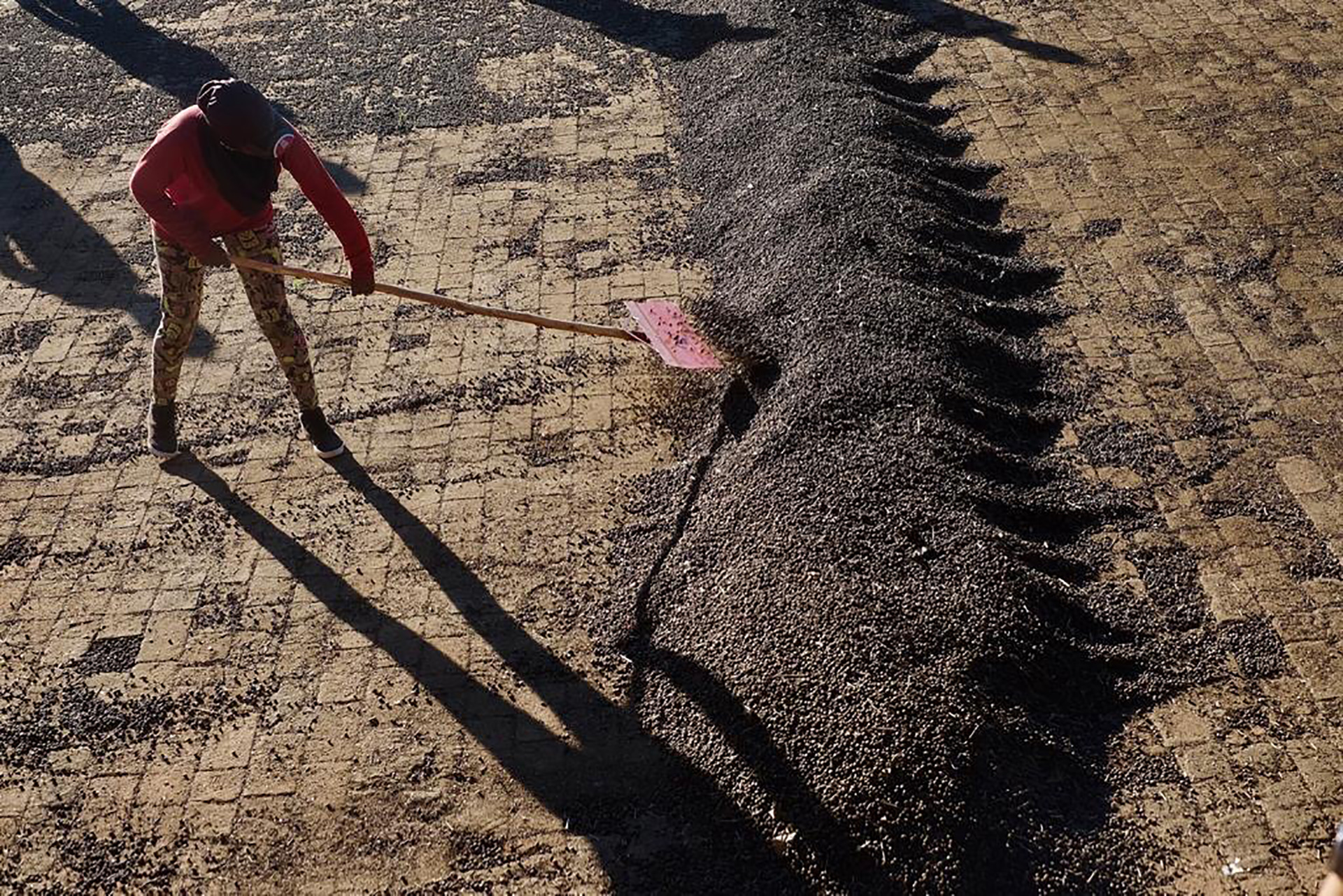
In order to accomplish that dream, they needed help. R.N., a coffee professional from São Paulo, had her first contact with Guaii coffee at the Armazém do Campo outpost in São Paulo. Armazém do Campo is a grocery shop that offers organic and agroecological products that come from the Landless Movement settlements throughout Brazil. She was then invited to revamp the coffee service at the grocery shop but ultimately realized there was no way to fix their coffee service unless she went to origin and tried to sort quality issues together with producers at the origin, that is, at the Quilombo Grande site.
“Guaii producers did not have a thorough comprehension of what is specialty coffee, and divided their coffee into three main commercial blends (Guaii popular, Guaii sustainable and Guaii organic), based solely on screen size and with no regard for cup quality, which is a pity because they had really good coffee out there,” says R.N. The idea going forward is to separate the coffee based on quality and sell it better, and with the income generated train the farmers from the coop on how to cup and sort their own coffee, and also buy basic equipment for the coop.
In parallel, in São Paulo, some coffee shops and coffee professionals formed an informal alliance in order to, together, come up with better practices in terms of hiring minorities, reducing waste, discussing current political issues that could affect the coffee community, and so on. So, R.N. facilitated with them in order to have the coffee produced by the coop shipped to São Paulo and then roasted by N.B., a roaster based in the capital. Each coffee shop then commercialized the coffee to their customer base being very open about the origin of the coffee. The first bags were already acquired by Por Um Punhado de Dólares, Takko Café São Paulo, and KOF cafés in São Paulo and sold under the MST label, in an attempt to show specialty coffee consumers that the landless movement also can produce quality coffee and also that their agricultural goods are not a taboo, as many Brazilians still prefer to believe. They exist, they are legally commercialized, and they can even reach high-quality coffee shops that dare show their customer base their political stance on the subject. This is a big deal: introducing a specialty coffee produced by a Landless Movement community is a way of making the theme mainstream for many Brazilians who still see the movement as anarchic or just plain wrong. These cafes made a bold move when they made the decision to overtly sell coffee from the Movement.
Things haven’t been easy for R.N. though: “When you are working with farmers who are constantly threatened for their lives or their land, it’s very hard to get things done in a reasonable timeframe. Simple tasks, like getting them to ship some samples, get postponed because they have much more crucial things to worry about, such as a trial coming up or an unexpected visit from a neighbor farmer.”
“The Landless Movement in Brazil, in my point of view, goes beyond the subject of land concentration—a heritage from our colonial past—but also does something rare nowadays: affordable, organic, quality food, readily accessible in the cities. If you think about it,” says R.N., “that is revolutionary. And that is why it is so scary to large landowners and the big Agro,” she pauses.
“I mean, imagine what they could do if they had more resources in hand?”
Juliana Ganan is a Brazilian coffee professional and journalist. Read more Juliana Ganan on Sprudge.
*Names have been changed at the request of the individuals
